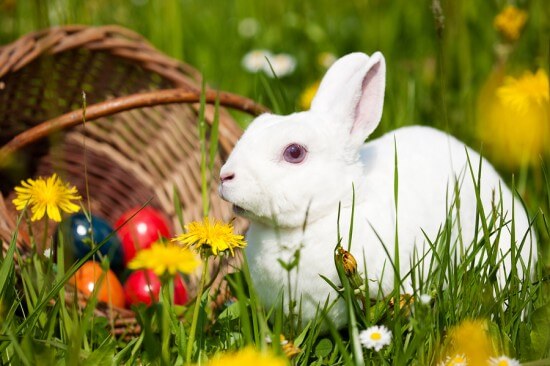
Today we there are hundreds of traditions and customs surrounding various holidays. Goblins and ghouls haunt Halloween, reindeer and Santa add fun and joy to Christmas and bunnies and eggs make Easter sweeter. So, where did these traditions come from? Most find their origins in pagan celebrations or customs; they have been modified or combined with Christian traditions.
It is believed the first Easter Bunny called southwestern Germany home. The Anglo-Saxons introduced the bunny as an Easter symbol in the 1500s; the first written records of it can be found in the 1600s.
The idea of the Easter Bunny came from a pagan celebration. Angle-Saxons worshipped Eostre, the German goddess of spring and fertility. Her earthly symbol was the rabbit or bunny which the Anglo-Saxons revered and cared for. Thus, the rabbit was a symbol of, and incorporated into the celebration of, Eostre.
When the Anglo-Saxons converted to Christianity, sometime around the 1700s, many pagan traditions and customs were combined with Christian beliefs. This was also true for pagan holidays; the celebration for Eostre was combined with the Christian celebration of Jesus’ resurrection because they occurred around the same time. Once combined, Easter was created. For many years Easter was still celebrated with many pagan practices; however, today it a mix of equal parts, pagan, or non-religious, and Christian with a small commercial element mixed in.
German immigrants brought the traditions surrounding Easter to America in the 1700s. German children looked forward to the Easter because the goddess Eostre, incarnated as a bunny, would bring them goodies. The original Easter Bunny character was called “O_ster Haws_e”, which was pronounced Osterhase. If the children created brightly colored nests and placed them in a secluded area of their home, then the “O_ster Haws_e” would lay brightly colored eggs for them. However, not unlike with Christmas, the children had to be good to receive eggs.
The tradition spread, along with the Easter bunny as a symbol, far beyond the Germans who settled in Pennsylvania Dutch country and brought the celebration to America. In the 1800s, the first edible Easter Bunnies were made in Germany; the trend caught on. Many aspects of the traditions and rituals surrounding Easter are part of our modern day Easter celebration. The biggest change within between the original Easter traditions and the modern is instead of the placing of the nest in a secluded area of your house, children set out baskets and the Easter bunny fills and hides it.
Though the Easter bunny has its origins in Germany, today it’s a global symbol of Easter and part of many family traditions.
